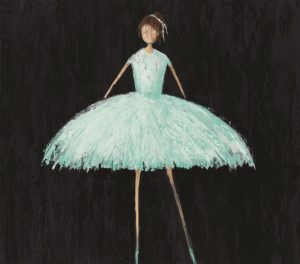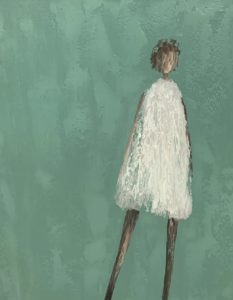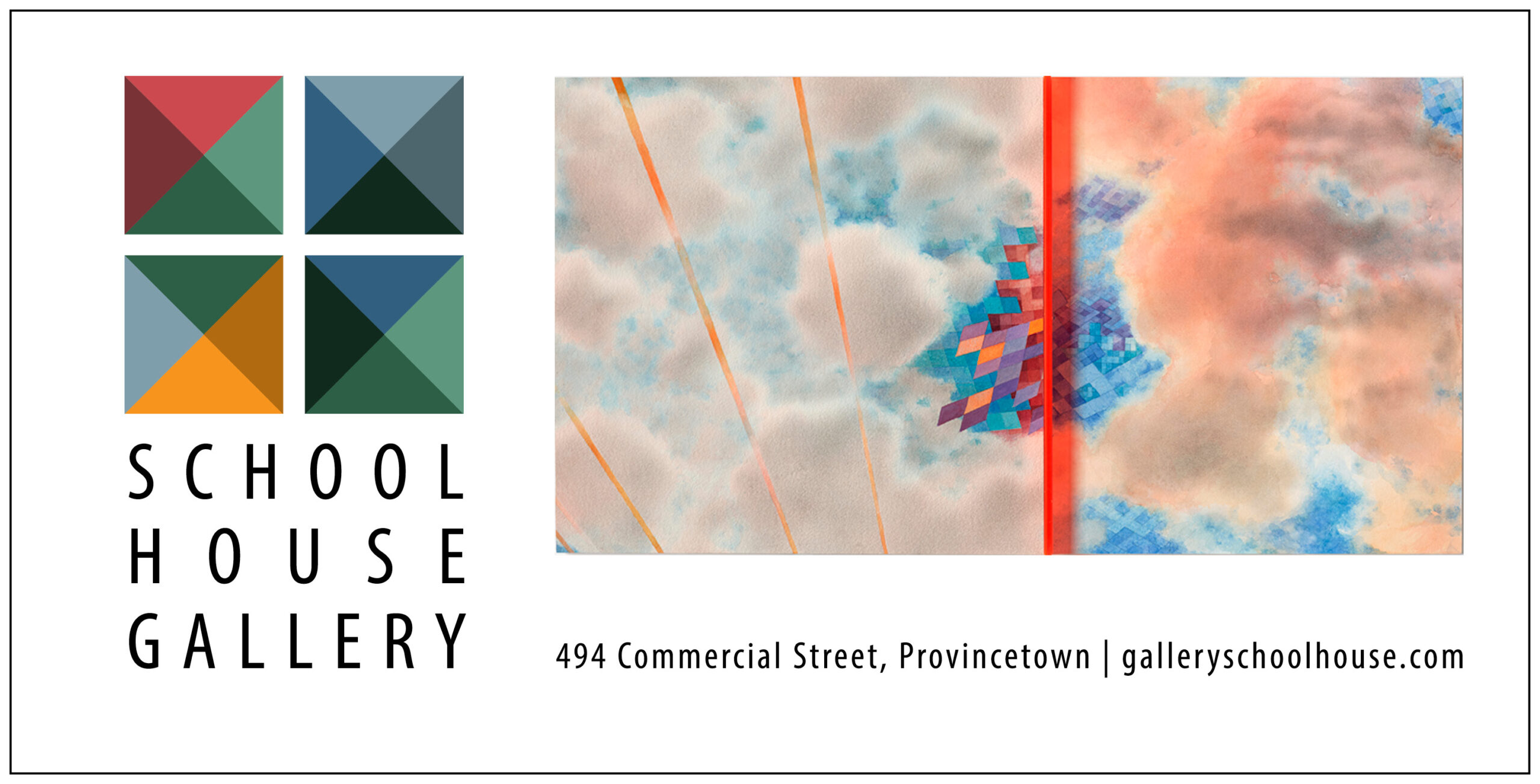From a distance, René Romero Schuler’s paintings might be written off as decorative, fashionable, or pretty. And that wouldn’t be entirely wrong: they are pretty. But that’s only part of the story.
At first glance, they are huge canvases showing a succession of girls: all faceless, they have the same toothpick legs, often a bobbed haircut, and white skin. The figures are somehow at once spindly and imposing, towering above the viewer, but also looking as if they could blow away in the wind.

What differentiates them from one another is, mostly, the dresses they wear. Cherry red, black, ivory, blush pink, lime green. In Glimmer, a girl with a bow in her hair wears a white and Tiffany blue dress that billows out at the bottom like a gigantic umbrella.
The second part of the story is about what happens when you step forward.
“When you do get closer to them,” says Schuler, who has a show at Rice Polak Gallery through Aug. 18, “you see that they’re really imperfect and marked up and scarred.”

Schuler applies paint to the canvas with a palette knife, forming the figures. She then scrapes large chunks of that paint away. This creates the imperfect effect Schuler describes. The girls are not as smooth, seamless, and whole as one might have at first thought. They’ve been chipped away, tarnished. The figure in Aelin has large parts of her dress and upper body scraped away. In Dasha, it’s the face, which seems to fade in and out of the canvas.
“It gives the viewer a second to think about how they once thought this was the most beautiful thing,” says Schuler. “But then, they see it’s made up of a lot of stuff that’s scraped together and scraped out. The figure is scarred. That’s the message here: these figures are beautiful not despite these marks but because of them.”

For Schuler, this message is personal. “What these paintings mean for me is this: I’ve spent a lifetime of having people make judgments about me based on what I look like,” she says. “I spent a lot of time wishing someone could see in my eyes that there was something more to me and that there was something more that I needed.”
When Schuler was in elementary school, she lived in an abusive household with her parents. As a teenager, she became homeless, and she spent her days walking up and down Ashland Street (also the name of one of the paintings in the show) in Chicago. She felt that walking was safer than sitting still.
Schuler still lives in Chicago today, now with a husband and two sons. She says the city has “embraced me in every which way.” Before coming to fine art painting, she worked in commercial art as a muralist, painting the walls of Chicago restaurants and nightclubs. This background bleeds into her work today: the extra-large canvases she uses, some as tall as five feet, are her first love and comfort zone.

Perhaps the most perplexing — challenging, even — aspect of Schuler’s work is that moving closer to the figure on the canvas doesn’t allow you to know more about her. The scrapes and scars dismiss any tidy narrative (pretty girl, fashionable dress), but they don’t introduce a new one in its place. The figures are obscured, denying themselves to the viewer.
Even the toothpick legs figure into this: “You know when you look at a person against the sun and all you see is this dark, backlit figure?” Schuler says. “And the darkness creeps up on the figure and certain parts of their body are no longer visible? The legs are sort of like that. I’m not painting skinny legs. You just can’t see the rest of the legs. I’m not drawn to the figures because of what you can see. I’m drawn to them for what you can’t see.”
Material Girl
The event: Works by René Romero Schuler, alongside ones by Stanley Bielen, Robin Cheung, and Donald Saaf
The time: Thursday, Aug. 5 through Aug. 18; opening reception Friday, Aug. 6 at 7 p.m.
The place: Rice Polak Gallery, 430 Commercial St., Provincetown
The cost: Free



